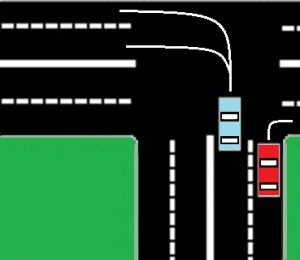Monthly Archives: September 2014
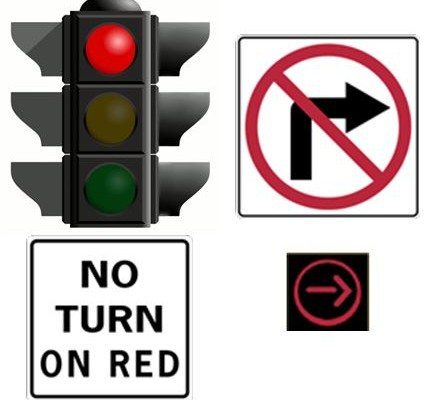
Ask The Driving School Instructor: Right Turn On Red
September 23, 2014
Question: What are the rules for making a right turn on red?
Answer: There are several rules and things that you must watch for when making a right turn on red.
The first and most important rule – and this is the law in all 50 states – you must come to a complete stop at the red light before making a right turn on red. Failing to obey this law gets a lot of drivers in trouble either through involvement in a crash, or by receiving a ticket for running a red light. Many drivers, at intersections where red light cameras are installed, receive a ticket for running a red light because they seem to have forgotten this law and make a “rolling right on red.” Red means stop!
Making a right turn on red isn’t allowed at every intersection. If a “No Right Turn On Red” sign is posted, it’s illegal to turn. Sometimes, when the oncoming lane has a left turn light, an electric “No Right On Red” sign will light up. It’s your duty as a driver to be aware of all signs.
Other intersections may have a red right turn arrow. Just like a red light, a red right turn arrow means you must stop. However, in some states, Florida included, it’s legal to turn right on a red arrow after you’ve come to a complete stop unless there’s another sign posted that says “No Right On Red.” If you’re unsure of what the law is in your state, check your driving manual or, to be safe, remain stopped until you get a green arrow.
There are a lot of good reasons why you must come to a complete stop before making a right turn. Intersections can be a dangerous place and most crashes in the US happen at intersections. When you stop at a red light, before turning right, check for;
- Pedestrians that may be in the crosswalk – they have the right-of-way.
- Vehicles coming from the left on a green light (including bicycles and motorcycles) – they have the right-of-way.
- Vehicles in the oncoming lane turning left on a green left turn arrow – they have the right-of-way.
- Vehicles from the right that are making a U-turn at the intersection – they have the right-of-way.
- Pedestrians and bicyclists entering the intersection from the right- they have the right-of-way.
Another issue with right turns on red involves driver courtesy and good common sense. Sometimes, in heavy traffic, when traffic is backed up to the intersection, drivers must stop at the white line before entering the intersection to avoid blocking the intersection, if the light should change. Along with obeying the law, they are actually doing you a favor by keeping the intersection clear for you if your light should turn green. When you see a driver stop on a green light before entering the intersection, don’t take advantage of them by seeing that as an opportunity to make a right turn on red. It’s illegal, rude, and could lead to a road rage situation.
You’re only allowed to turn right on red if the way is completely clear of all pedestrians and other traffic. Don’t allow yourself to get in the habit of a rolling right turn on red.

Ask The Driving School Instructor: Graduated Driving Laws By State
September 16, 2014
Question: Are Graduated Driving Laws the same in every state?
Answer: Most states have some form of Graduated Driving License (GDL) law but they aren’t all the same.
GDL laws are designed to give new teen drivers more practice in a safer driving environment before granting them full driving privileges. According to the Insurance Institute for Highway Safety (IIHS), the best GDL laws do this by:
- Setting a minimum learner’s permit age of 16.
- Setting a minimum intermediate license age of 17.
- Requiring at least 70 required hours of supervised practice driving.
- A night driving restriction starting at 8 p.m. during the intermediate stage.
- A ban on all teen passengers.
Many states ban other teen passengers for six months to a year because teen passengers can be very distracting and your chances of being involved in a crash are up to four times higher with another teen in the car.
In addition to the above, many states also include a total ban on all cellphone use while driving.
As you probably already realize, your state’s GDL law probably doesn’t include all of these requirements. For instance, in California, the GDL law requires:
- That the teen be at least 15 and one-half years of age before applying for a learner’s permit.
- Both classroom and behind the wheel driver training for anyone under the age of 18 before they can use their learner’s permit to drive on the open road.
- During the Learner’s permit phase, the teen must be accompanied by a licensed driver 25 years of age or older sitting in the front passenger seat.
- Receive at least 50 hours of supervised driving experience (10 at night) before being able to take the behind-the-wheel test.
- Once the teen has passed the behind-the-wheel test, he or she will be given a “Provisional License” allowing them to drive alone.
- During the first 12 months on a provisional license, the teen cannot drive alone between the hours of 11 p.m. and 5 a.m.
- During the first 12 months on a provisional license, the teen cannot transport passengers under 20 years of age.
- Traffic violations during the provisional license period can result in suspension of the license until age 18.
- It is illegal for a minor to use a cell phone in any way while driving other than to call 911.
- Full driving privileges are not given until age 18.
Let’s compare that to Florida’s GDL law. In Florida teen drivers:
- Must be at least 15 years of age to apply for a learner’s permit.
- Must hold their learner’s permit without any traffic violations for one year.
- During the Learner’s permit phase, the teen must be accompanied by a licensed driver 21 years of age or older sitting in the front passenger seat.
- Must receive at least 50 hours (10 at night) of driving instruction before applying for an operator’s permit.
- May not drive between 11 p.m.-6 a.m. for 16 year-olds and 1 a.m.-5 a.m. for 17 year-olds.
That’s it! There are no other restrictions.
As you can see, GDL laws are not the same in every state. However, as a teen, if you travel to another state, you’re subject to that state’s GDL laws so it’s a good idea to check out the GDL laws in the states that you may be traveling to.
No matter what the laws in your state may be, you and your parents can choose to include all of the restrictions recommended by the IIHS in your “teen/parent driving contract”. As a teen, you may not be crazy about that idea but it’s for your own safety. Studies have shown that, in the states with the strictest GDL laws, the teen death rates have gone down significantly.
To compare state GDL laws, visit: Graduated Driving Laws by State
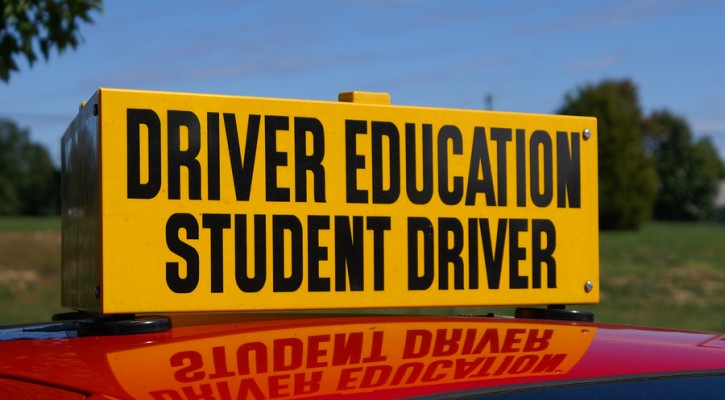
Teens With Drivers Ed Have Fewer Crashes and Tickets
September 12, 2014
Teens who complete Drivers Ed (DE) have fewer crashes and receive fewer traffic tickets than teens who don’t complete a drivers ed program according to a study published by the AAA Foundation. The difference between DE and non-DE teens, while small, are still statistically significant according to the researchers.
The study looked at a large number of teen drivers in the Province of Manitoba Canada and the State of Oregon. To determine a baseline, the studies surveyed teens who planned to take drivers ed and those who didn’t. Afterwards, they followed up with additional surveys, and performances in driver simulations. They also looked at scores on the driver’s exam and driving records.
In Oregon, the study compared the driving records of a total of 94,342 DE and non-DE teen drivers and found:
- DE teens had significantly fewer crashes than non-DE teens over the first 18 months of independent driving.*
- DE teens had 4.3% fewer crashes than non-DE teens during the entire period of the study.
- DE teens had significantly fewer convictions for traffic offenses than non-DE teens during the first 18 months of independent driving.*
- DE teens had 39.3% fewer convictions for traffic offenses than non-DE teens during the entire period of the study.
* Teenagers’ crash and near-crash rates were nearly 4 times the rates of adults during the 18 months following licensure. (Insurance Institute for Highway Safety)
In both Oregon and Manitoba, the researchers found that:
- DE teens had a slightly better knowledge of safe driving practices.
- DE teens were more knowledgeable of and more supportive of Graduated Driver License (GDL) laws.
Even though the differences were small, that still means a significant number of teens were spared injury and possibly death in a traffic collision. Lower traffic conviction rates mean lower insurance rates and less money spent on traffic fines.
In previous articles we have made the case that the US has one of the the worst driver training program for teens in the industrialized world. Most European countries not only require a classroom drivers ed course but also a significant number of hours behind the wheel with a trained and licensed driving instructor before they can apply for a license. In Canada, if you don’t take a drivers ed course, you must wait until age 16 before applying for a learner’s permit. After one year on a learner’s permit, the teen can apply for a “novice” driving permit by passing a road test. After two years of incident free driving as a novice driver, they must pass another road test to get a full license.
In the US, we depend on parents to teach a teen to drive and, usually, those parents lack the proper training to teach their child how to drive. After only one year of supervised driving and passing the road test, there are few limits on a teen’s solo driving.
High school drivers ed programs are rapidly disappearing because, when school budgets have to be cut, drivers ed is usually one of the first programs to go. In the Oregon study mentioned above, out of the 94,342 teen drivers observed, only 22 percent had taken a drivers ed course.
If your teen’s school doesn’t offer a drivers ed course, consider enrolling the teen in a private, state approved course. It might just save his or her life.
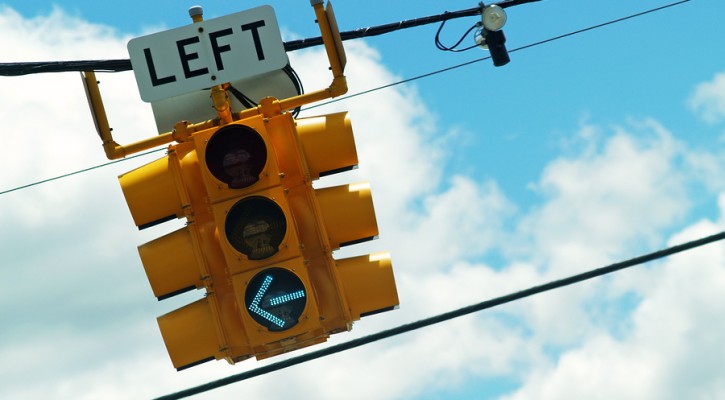
Ask The Driving School Instructor: Left Turn
September 8, 2014
Question: When making a left turn at an intersection, can you end the turn in any lane?
Answer: In most states, whether turning left or right, you must turn into the nearest lane. In other words, if you’re making a right turn from the right lane, you should turn into the far right lane of the street you are turning onto. If making a left turn, you should turn into the left lane.
Florida law is a little different from most states. Under Florida law, you must still make a right turn from the right lane into the right lane. However, when making a left turn, you may turn into “any lane lawfully available, or safe for the desired direction of travel.”
Let’s look at a scenario where it would be legal to turn left into any “lawfully available, safe” open lane. Let’s say, as soon as you turn left, you need to make a right turn into a parking lot. In that case, under Florida law, it would be legal to turn left into the far right lane as long as – and this is important – the far right lane is clear of traffic and you can safely move into that lane. If there is traffic in the lane you want to move into, you must move into the safest available lane and then move into your desired lane as soon as it’s safe to do so.
Unless you need to turn again, after making a left turn, the safest and smartest thing to do is to turn from the left lane into the left lane. Afterwards, if you need to move over into another lane, you should signal for a lane change, check to see if the lane is clear, and then move over. Remember that, under Florida law, you must use your turn signal whenever you are making a turn or when changing lanes.
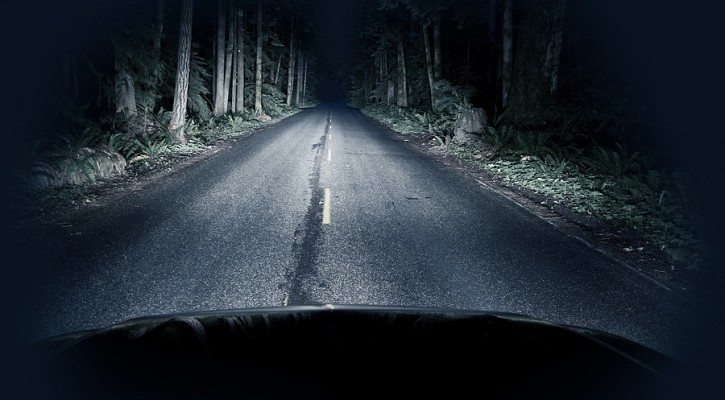
Ask The Driving School Instructor: Overdriving Your Headlights
September 2, 2014
Question: What do they mean when they talk about overdriving your headlights?
Answer: Overdriving your headlights means driving too fast to be able to stop in the distance lit by your headlights. Automobile headlights are only effective for a certain distance. On average, with low beam headlights, you can only spot objects in the road for a distance of about 160 feet in front of your vehicle. With high beams, you can see about 450 feet ahead. Those distances don’t take into account the age, visual abilities of the driver, or road conditions. Your headlights can’t light objects over hills, around curves, or dips in the road and they’re even less effective in rain, fog or snow. Continue Reading

